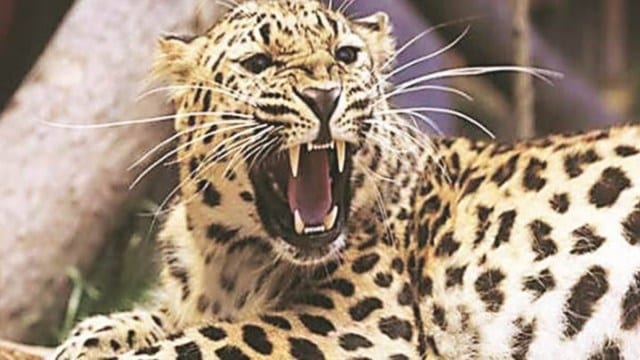Click here to join Express Pune WhatsApp channel and get a curated list of our stories
Eight-year-old boy killed in Junnar in second fatal attack by leopard on children in a month
Forest officials have identified the deceased as Rudra Mahesh Fafale (8), whose family hails from Akole in Ahmednagar district and was visiting relatives in Kolwadi.
 It has been observed that leopards, which are a very adaptive species, have started using these fields which have thick sugarcane cover, as a habitat. This provides a safe place for breeding too. During the summer months, sugarcane cutting takes place.
It has been observed that leopards, which are a very adaptive species, have started using these fields which have thick sugarcane cover, as a habitat. This provides a safe place for breeding too. During the summer months, sugarcane cutting takes place. IN A second fatal attack by leopards on a child in Junnar area, an eight-year-old boy was killed in Kolwadi village of Junnar taluka on Wednesday morning.
Forest officials have identified the deceased as Rudra Mahesh Fafale (8), whose family hails from Akole in Ahmednagar district and was visiting relatives in Kolwadi.
“Initial information suggests that Rudra was playing in the open yard in front of his aunt’s house around 8 am when suddenly a leopard jumped from the adjacent sugarcane plantation. The leopard dragged him into the plantation, for at least 50 metres. The
Deputy Conservator of Forests for Junnar Division, Amol Satpute said, “This is the second unfortunate fatal attack since April 11 in Junnar area. In the April 11 attack, a one-and-half-year-old child was killed. On May 5, a woman was attacked and she is currently being treated in hospital. On Wednesday morning, an eight-year-old visiting his relatives here has lost his life.”
Satpute added, “Our efforts towards awareness and sensitisation of the population are continuously on. We are taking various preventive and remedial measures to address this complex issue of man-animal conflict.”
Among the key drivers of human-leopard encounters during the summer months are the changes that forest areas go through during this period and also the cutting of sugarcane that happens during this period, the forest officials and experts have said. One of the phenomena observed over the two to three decades is an increase in the area coming under sugarcane cultivation.
It has been observed that leopards, which are a very adaptive species, have started using these fields which have thick sugarcane cover, as a habitat. This provides a safe place for breeding too. During the summer months, sugarcane cutting takes place. The summer months also see an overall decrease in the foliage in the forests leading to depleting hiding places. The scarcity of water and prey base in the forest forces leopards to travel more to sustain and this means increased encounters with humans, officials said.
Click here to join Express Pune WhatsApp channel and get a curated list of our stories







